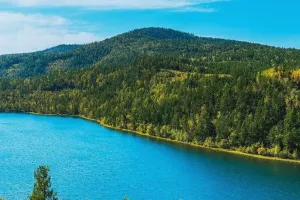Cross-sea bridges refer to bridges across straits, bays and other seas, and the spans of such bridges are generally relatively long. The short ones are several kilometers, and the long ones are tens of kilometers. If you look closely, you will find that some of them are straight and some are curved. What's going on here?
As a landmark and grand project, the sea-crossing bridge needs to take into account the direction of seawater flow. The purpose of this requirement is to make the direction of the piers and abutments follow the direction of the water flow as much as possible, so as to avoid the piers and abutments being subjected to water flow all the year round and the sundries and floating ice entrained in the water flow. The constant impact of other objects also avoids accidents caused by sudden water currents rushing to the piers when the ship passes through the channel between the piers. In the ocean, the sea water flows 24 hours a day and is open all year round, which will continuously impact the bridge. This kind of wave impact is far greater than that of ordinary bridges. Although its flow has a certain There are certain rules to follow, but they come from many directions. By designing the S-shaped curve, the water flow can be guided to reduce the damage to the bridge.
The cross-sea bridge also needs to consider the driving safety. If there is no curve on the plane but a straight line, and the surrounding is the color of the monotonous sea, the driver will be prone to visual fatigue. This may lead to a crash, which is not conducive to traffic safety.
But the bending of the bridge across the sea is actually far from that simple. One of the most important reasons is that the bottom of the ocean is not as flat as its surface, but is filled with hills and undulations. After being corroded by sea water and marine organisms, the geological environment of the seabed will be strange. Some places are solid bedrock, and the bridge piers can be directly built on it; some places are loose silt that needs to be laid down The piers can be stable only when the deep piles reach the bedrock below a few tens of meters; in some places, the brittleness is the fracture zone, and no buildings can be built at all, let alone a bridge with a weight of tens of thousands of tons and a design life of 120 years.
Therefore, before the bridge was erected, engineers carefully studied the geological structure of the nearby seabed, cleverly avoided all the geological environments that were not suitable for the construction of the bridge, and chose the route of the bridge. Of course, this route is unlikely to be a straight line, and must go around east and west.
In addition, there are also erratic typhoons above the water constantly harassing the bridge. In the face of this lateral force from all sides, the resistance of the straight bridge is very poor, and the bridge must bend to be more stable.
Therefore, the construction of a long sea-crossing bridge into a curved curve is affected by various natural and realistic factors. This is not a waste of building materials.


